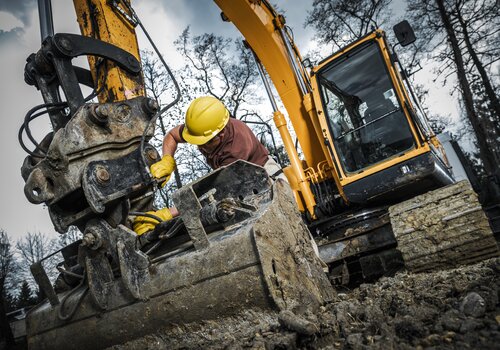A game-changing rule about respirable crystalline silica was rolled out on June 17, 2024, by the Mine Safety and Health Administration (MSHA). This new regulation is designed to better protect everyone on the job site from harmful silica dust. Let's break down what these changes mean for you and how they might impact your job sites.
KEY CHANGES
The new MSHA rule significantly lowers the permissible exposure limit (PEL) for respirable crystalline silica. The PEL has been reduced to 50 micrograms per cubic meter of air, averaged over an 8-hour shift, from the previous limit of 100 micrograms. This change aligns with the standards set by the Occupational Safety and Health Administration (OSHA).
Employers are now required to perform regular exposure assessments to determine the levels of silica dust present on job sites. This involves using air monitoring and other assessment methods to ensure that workers are not exposed to harmful levels of silica dust.
Additionally, the rule mandates the implementation of engineering controls and work practices to reduce silica exposure. These controls include water sprays, ventilation systems, and enclosed cabs with air filtration for equipment operators. If these measures are not sufficient to reduce exposure below the new PEL, employers must provide respiratory protection for affected workers.
Medical surveillance is another critical component of the new rule. Employers must offer medical exams, including chest X-rays and lung function tests, to workers who are exposed to silica above the action level of 25 micrograms per cubic meter, averaged over an 8-hour shift, for 30 or more days per year.
Employers must also provide training to workers on silica hazards and the measures in place to protect them. This training includes information on the health risks associated with silica exposure and the use of protective equipment and controls. Detailed records of exposure assessments, medical surveillance, and training activities must be maintained and made available for review by MSHA inspectors.
JOB SITE IMPACTS
The updated rule has significant implications for construction contractors overseeing construction or maintenance projects on mining sites, where activities like cutting, grinding and drilling can generate silica dust. Compliance with the new rule may result in increased costs for contractors due to the need for additional air monitoring, engineering controls, personal protective equipment (PPE) and medical surveillance.
Contractors will need to implement operational changes to minimize silica dust generation. This may involve altering work processes, investing in new equipment, and training workers on dust control measures. The new rule emphasizes the protection of workers from the serious health effects of silica exposure, including silicosis, lung cancer and other respiratory diseases.
The rule's alignment with OSHA's silica standards means that contractors across various sectors must adopt similar dust control measures and safety protocols, some of which may be redundant.
PREPARING FOR COMPLIANCE
To get ready for the new MSHA Silica Rule, here are some steps you can take:
- First, conduct a risk assessment to identify tasks and processes that generate silica dust and assess the level of exposure for workers. This will help determine the need for engineering controls and PPE.
- Next, invest in equipment and technologies that reduce silica dust generation, such as water delivery systems for cutting tools, local exhaust ventilation and enclosed operator cabs with HEPA filters. Develop a comprehensive silica control plan that outlines the steps to control silica exposure, including engineering controls, work practices, respiratory protection and medical surveillance. Ensure that the plan is communicated to all workers.
- Providing training is essential. Educate workers on the hazards of silica dust, the measures in place to protect them, and the importance of medical surveillance. Regularly monitor silica dust levels on job sites to ensure compliance with the new PEL and adjust control measures as needed.
- Finally, keep detailed records of exposure assessments, training and medical surveillance. These records are essential for demonstrating compliance with the rule and protecting the company from potential legal issues.
LOOKING AHEAD
The MSHA Silica Rule is part of a broader trend toward stricter regulation of workplace hazards. Contractors should be prepared for additional regulations in the future, focusing on other hazardous substances and safety measures.
The new MSHA Silica Rule represents a significant step in protecting workers from silica dust. Understanding and complying with the rule is crucial for ensuring safety, avoiding legal issues and maintaining a competitive edge. By assessing risks, implementing controls and providing training, contractors can create safer and healthier job sites.
Photo credit: AGNORMARK/BIGSTOCKPHOTO.COM












